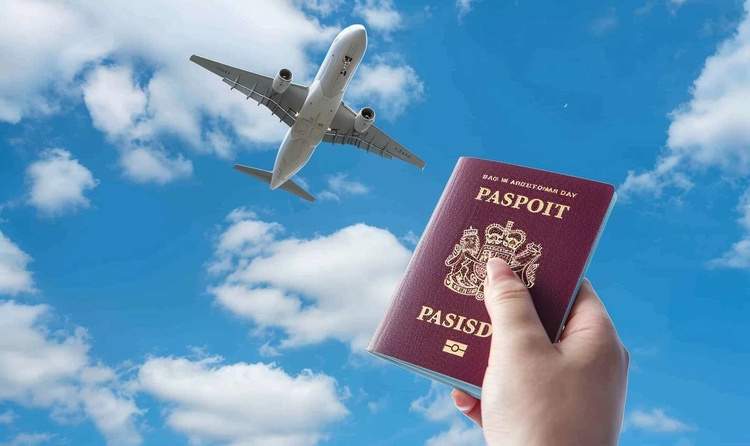Reading fare calendars and trend charts to plan flight purchases
Fare calendars and trend charts help travelers spot price patterns over weeks and months. This short overview explains how to use visual pricing tools to time a trip, account for passport timing and seasonal demand, and combine market signals with personal priorities like privacy or rustic travel plans.

Fare calendars and trend charts are visual tools that show how airfares change over days, weeks, or months. They condense large amounts of pricing data into patterns you can scan quickly: low-price windows, rising trends, or consistent peaks tied to holidays and events. Learning to read these visuals gives context to a single quoted fare, helping you plan a trip around passport renewal timelines, local market days, or visits to historic sites where timing affects both availability and cost.
Fare calendars for planning a trip and passport timing
Fare calendars display prices for each date in a grid so you can compare weeks at a glance. Use them when your travel dates are flexible: shifting departure or return by a day or two can reduce costs. Calendars are especially useful if passport renewals or visa windows constrain your dates—pair the calendar view with your passport timeline to avoid last-minute premium fares. For trips intended to explore historic reconstruction events or historical gastronomy festivals, checking multiple months ahead helps you anticipate demand spikes.
Trend charts and seasonality for historic sites
Trend charts show fare movement over time and can highlight seasonal cycles. If you’re visiting historic sites—whether Maya civilization ruins or Balkan towns—look for repeating peaks tied to school holidays, local festivals, or historical reenactments. Trend lines that steadily climb indicate growing demand; sudden spikes often signal booked events or limited capacity. Combining trend charts with local market schedules or entertainment calendars gives a clearer picture of when flights are likeliest to rise.
Privacy, home base, driver schedules and flights
Practical considerations such as privacy, home schedules, and ground transport availability affect purchase timing too. If a driver or sedan transfer needs to be arranged at odd hours, you may prioritize nonstop flights or specific connections, which can cost more. Knowing your home base constraints—whether you must travel from a local airport with limited service—helps you interpret fare patterns: fewer flights at an origin often mean less price volatility but fewer opportunities to switch dates without penalty.
Transfers, sedans, rustic logistics and cabin choice
Connections, transfer types and cabin choices influence fare comparisons shown on charts. Rural or rustic destinations with limited services may have higher fares at peak times; adding the cost of a sedan transfer or last-mile driver can change the overall economics of a booking. Trend charts won’t show ground transfer fees, so factor those separately. If your trip involves a hammock-and-sand beach stay, check both flight trends and local market conditions—sometimes off-peak flights pair with high local prices during festivals.
Signals for exotic, sand, hammock, and market trips
For exotic itineraries—whether a coastal fish market visit, a costume festival, or a chef-led food tour—watch for signal patterns on trend charts: slow, steady declines may indicate an upcoming sale window; rapid rises suggest limited seats. Pay attention to weekends and local public holidays in your destination, which often create demand spikes. Use fare alerts tied to calendars and combine chart insights with research about entertainment schedules and historical gastronomy events to choose optimal purchase windows.
Pricing comparison: airlines and booking platforms
A real-world pricing perspective helps translate visual signals into actionable choices. Different platforms sample different inventories and present varied price ranges; comparing a few sources can confirm a trend rather than relying on one quote. Below is a compact comparison of common search services and the kind of cost estimations they typically surface for planning purposes.
| Product/Service | Provider | Cost Estimation |
|---|---|---|
| Fare calendar and explore map | Google Flights | Typical round-trip ranges: Short domestic $75–$350; Transatlantic $400–$1,200 |
| Aggregated OTAs and metasearch | Skyscanner | Aggregates low-to-mid carrier fares; similar ranges, useful for international benchmarks |
| Flexible date search and price alerts | Kayak | Shows historical price trends and gives median fare ranges for chosen months |
| Full booking and packaged options | Expedia | Includes bundled options (hotel, car); round-trip estimates comparable but can include added fees |
Prices, rates, or cost estimates mentioned in this article are based on the latest available information but may change over time. Independent research is advised before making financial decisions.
Conclusion Reading fare calendars and trend charts turns raw price quotes into context: patterns reveal seasonality, event-driven spikes, and windows where shifting dates yields savings. Combine visual tools with knowledge of passport timing, local markets, entertainment schedules, and ground logistics like sedans or driver availability to make informed purchasing decisions. Treat price ranges as estimates, cross-check multiple providers, and align timing with the non-price aspects of your travel plan—from historical reconstruction events to relaxed hammock days on the sand.





